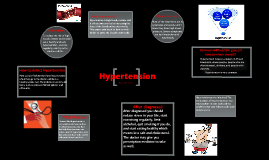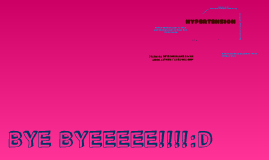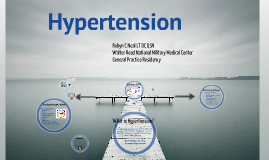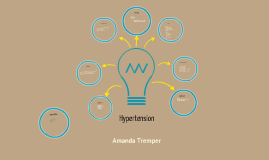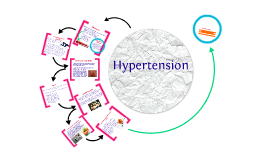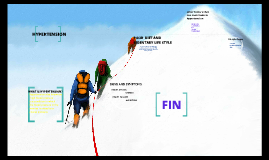Hypertension
Transcript: Dental Related Side effects of HTN Medications Exercise DASH diet Reduce alcohol consumption Reduce salt intake Weight loss of 3%-9% of body weight -2.5 Systolic vs. Diastolic Four Determinants in Blood Pressure Cardiac Output= HR x SV, CO increases, higher BP Overall compliance= More compliance, lower BP Peripheral Resistance= More resistance, higher BP Blood Volume= Higher the volume, higher BP Body Guidelines of HTN Diet Usually asymptomatic at first. Early symptoms: Occipital headache Fatigue Vision changes Tinnitus Dizziness Alcohol moderation Dental Management of the Hypertensive Patient, Continued SBP mmHg Navy Guidelines for BP During Treatment -11 -5.5 Common Characteristics: Increasing age Male Family history of HTN African Americans Overweight Stress Tobacco use Certain medical conditions Excessive alcohol consumption Identify patient and take thorough medical hx If BP is WNL, no contraindications to tx If BP is not WNL: Defer elective care and provide only urgent with BP 180/110 mmHg Use caution with vasoconstrictors in local anesthetics (0.036-0.054mg of Epi =2-3 carpules of Lidocaine/visit) Take BP before and after injections Caution: Non-selective Beta blockers and Epinephrine Avoid epinephrine impregnated cords Immediate physician referrals Avoid long, stressful appointments Be mindful of coadministration of antihypertensive meds with NSAIDS Pharmacologic Therapy Harvard Health Publications. Aug 2009 Medications for treating hypertension. Little, Falace, Miller, Rhodus. 2007. Dental Management of the Medically Compromised Patient. 7th Ed. Iaizzo, P. 2009. Handbook of Cardiac Anatomy, Physiology, and Devices. Greenlund, Daviglus, Croft. 2009. Differences in healthy lifestyle characteristics between adults with prehypertension and normal blood pressure. Journal of Hypertension. Weight loss <140/<90 WNL check annually 140-160/90-100 recheck at 3 visits if no change seek medical consult 160-200/100-115 recheck in 5 minutes, no dental treatment, medical consult >200/>115 recheck in 5 minutes, no dental treatment, medical consult immediately -3 Identify the types of Hypertension Know the guidelines of Hypertension Understand the treatment options for Hypertension Understand how to manage a patient with Hypertension in the dental setting -3 What is Hypertension? Blood Pressure Screening Guidelines Common Characteristics: Female Caucasian/Mexican American Normal BMI Under 40 years of age Physically active Moderate to no alcohol consumption Low daily sodium intake -3 Prevention of orthostatic hypotension Alleviate/manage anxiety Nitrous oxide can control anxiety but rebound hypertension is a risk if hypoxia occurs -4 Dental Management of the Hypertensive Patient, Continued Robyn C Neal LT DC USN Walter Reed National Military Medical Center General Practice Residency Blood pressure: Force applied on arterial walls in the systemic circulation Dental Management of the Hypertensive Patient "An abnormal elevation of arterial pressure that, if sustained and untreated, is associated with a significant increase in morbidity and mortality" Little, Falace, Miller, Rhodus Diuretics-(HTZ, furosemide)inhibit ion reuptake in kidney Anti-Adrenergics-(-olol, -zosin) Direct-acting vasodilators-(Hydralazine)- relax smooth muscle Ca+ channel blockers-(-dipine, verapamil)- reduces PR ACE inhibitors-(-pril)- block synthesis of angiotensin II Angiotensin receptor blockers-(sartan)-inhibit effects of angiotensin II Essential Hypertension Secondary Hypertension -5 Physiology Exercise Hypertension Is Your Patient Having a Hypertensive Crisis? -4 References The Hypertensive Patient Lifestyle Changes: Decrease in BP 200/120 mmHG Stop procedure Alert medical professionals Administer O2 6-10L Position in 45 degree angle Monitor ABCs and reassess every 5 minutes JNC 7 Recommendations Salt Reduction How Do I recognize a hypertensive patient? 5+7= Lifestyle Changes (cc) image by anemoneprojectors on Flickr -5 Learning Objectives Diuretics Xerostomia, postural hypotension, lichenoid reactions ACE inhibitors Xerostomia, dysgeusia Calcium channel blockers Gingival enlargement, postural hypotension Vasodilators Postural hypotension Alpha-blockers Xerostomia, postural hypotension Life threatening condition which involves acute, severe increase in BP that causes end-organ loss of function At every annual examination Before and after invasive surgery At every appointment with a hypertensive patient Refer for medical eval if 180/110 or above DBP mmHg The Normotensive Patient






